Risk Management Assessment: Key Elements, Legislation, and Processes
VerifiedAdded on 2023/01/05
|6
|881
|77
Homework Assignment
AI Summary
This document presents a comprehensive risk management assessment, covering essential aspects such as the key elements of the risk management process, including risk identification, analysis, evaluation, and treatment, and emphasizing the importance of a structured approach. It details Australian legislative and regulatory requirements, specifically focusing on the Competition and Consumer Act 2010, the Work Health and Safety Act 2011, and the Privacy Act 1988, explaining their significance. Furthermore, the assessment outlines the organizational policies, procedures, and processes for risk management at Bounce Fitness, providing insights into how the company identifies, analyzes, and mitigates risks. The document also includes a candidate declaration and references to support the information provided.
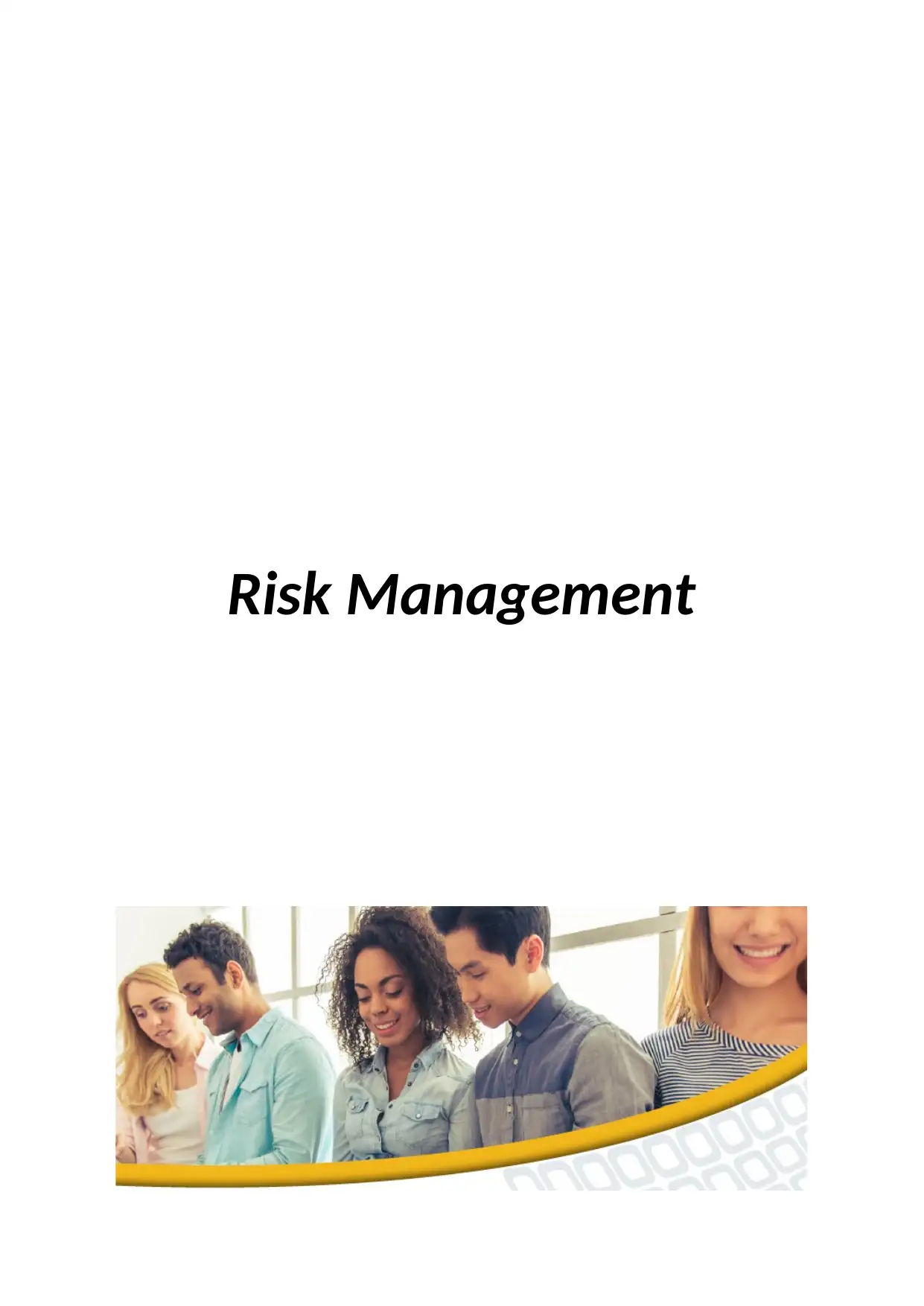
Risk Management
Paraphrase This Document
Need a fresh take? Get an instant paraphrase of this document with our AI Paraphraser
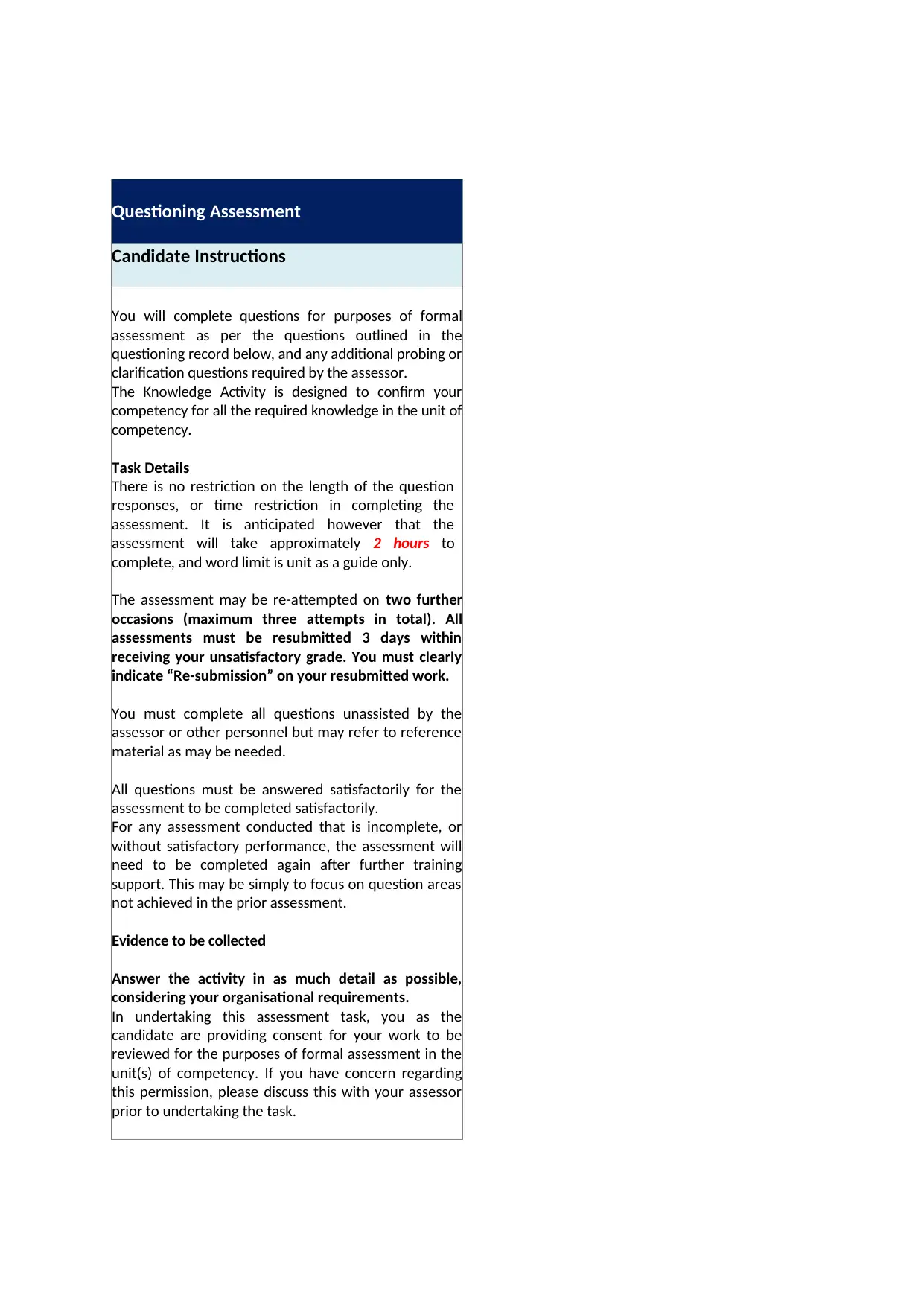
Questioning Assessment
Candidate Instructions
You will complete questions for purposes of formal
assessment as per the questions outlined in the
questioning record below, and any additional probing or
clarification questions required by the assessor.
The Knowledge Activity is designed to confirm your
competency for all the required knowledge in the unit of
competency.
Task Details
There is no restriction on the length of the question
responses, or time restriction in completing the
assessment. It is anticipated however that the
assessment will take approximately 2 hours to
complete, and word limit is unit as a guide only.
The assessment may be re-attempted on two further
occasions (maximum three attempts in total). All
assessments must be resubmitted 3 days within
receiving your unsatisfactory grade. You must clearly
indicate “Re-submission” on your resubmitted work.
You must complete all questions unassisted by the
assessor or other personnel but may refer to reference
material as may be needed.
All questions must be answered satisfactorily for the
assessment to be completed satisfactorily.
For any assessment conducted that is incomplete, or
without satisfactory performance, the assessment will
need to be completed again after further training
support. This may be simply to focus on question areas
not achieved in the prior assessment.
Evidence to be collected
Answer the activity in as much detail as possible,
considering your organisational requirements.
In undertaking this assessment task, you as the
candidate are providing consent for your work to be
reviewed for the purposes of formal assessment in the
unit(s) of competency. If you have concern regarding
this permission, please discuss this with your assessor
prior to undertaking the task.
Candidate Instructions
You will complete questions for purposes of formal
assessment as per the questions outlined in the
questioning record below, and any additional probing or
clarification questions required by the assessor.
The Knowledge Activity is designed to confirm your
competency for all the required knowledge in the unit of
competency.
Task Details
There is no restriction on the length of the question
responses, or time restriction in completing the
assessment. It is anticipated however that the
assessment will take approximately 2 hours to
complete, and word limit is unit as a guide only.
The assessment may be re-attempted on two further
occasions (maximum three attempts in total). All
assessments must be resubmitted 3 days within
receiving your unsatisfactory grade. You must clearly
indicate “Re-submission” on your resubmitted work.
You must complete all questions unassisted by the
assessor or other personnel but may refer to reference
material as may be needed.
All questions must be answered satisfactorily for the
assessment to be completed satisfactorily.
For any assessment conducted that is incomplete, or
without satisfactory performance, the assessment will
need to be completed again after further training
support. This may be simply to focus on question areas
not achieved in the prior assessment.
Evidence to be collected
Answer the activity in as much detail as possible,
considering your organisational requirements.
In undertaking this assessment task, you as the
candidate are providing consent for your work to be
reviewed for the purposes of formal assessment in the
unit(s) of competency. If you have concern regarding
this permission, please discuss this with your assessor
prior to undertaking the task.

Objective To provide you with an opportunity to show you have the required
knowledge for this unit.
knowledge for this unit.
⊘ This is a preview!⊘
Do you want full access?
Subscribe today to unlock all pages.

Trusted by 1+ million students worldwide
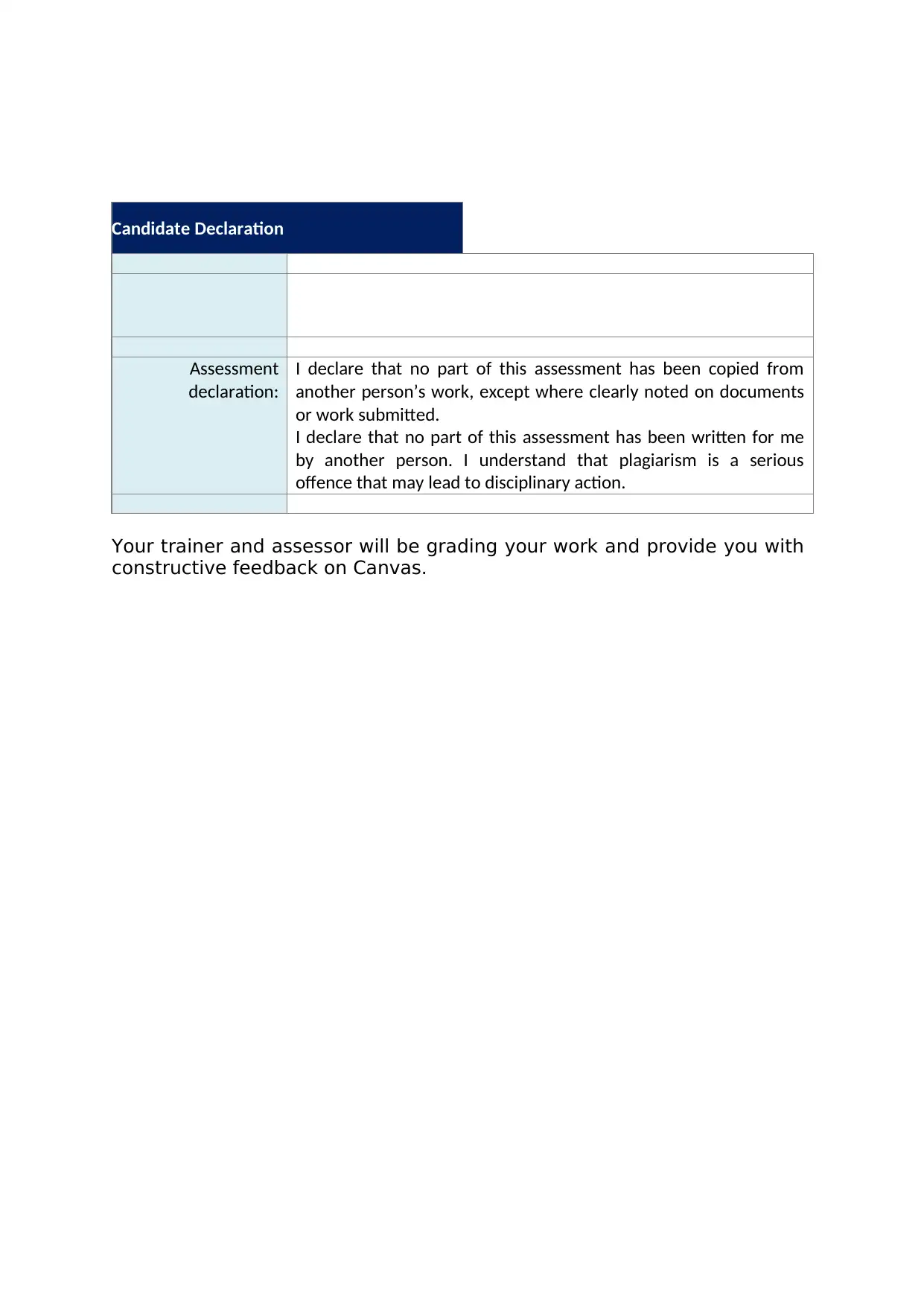
Candidate Declaration
Assessment
declaration:
I declare that no part of this assessment has been copied from
another person’s work, except where clearly noted on documents
or work submitted.
I declare that no part of this assessment has been written for me
by another person. I understand that plagiarism is a serious
offence that may lead to disciplinary action.
Your trainer and assessor will be grading your work and provide you with
constructive feedback on Canvas.
Assessment
declaration:
I declare that no part of this assessment has been copied from
another person’s work, except where clearly noted on documents
or work submitted.
I declare that no part of this assessment has been written for me
by another person. I understand that plagiarism is a serious
offence that may lead to disciplinary action.
Your trainer and assessor will be grading your work and provide you with
constructive feedback on Canvas.
Paraphrase This Document
Need a fresh take? Get an instant paraphrase of this document with our AI Paraphraser
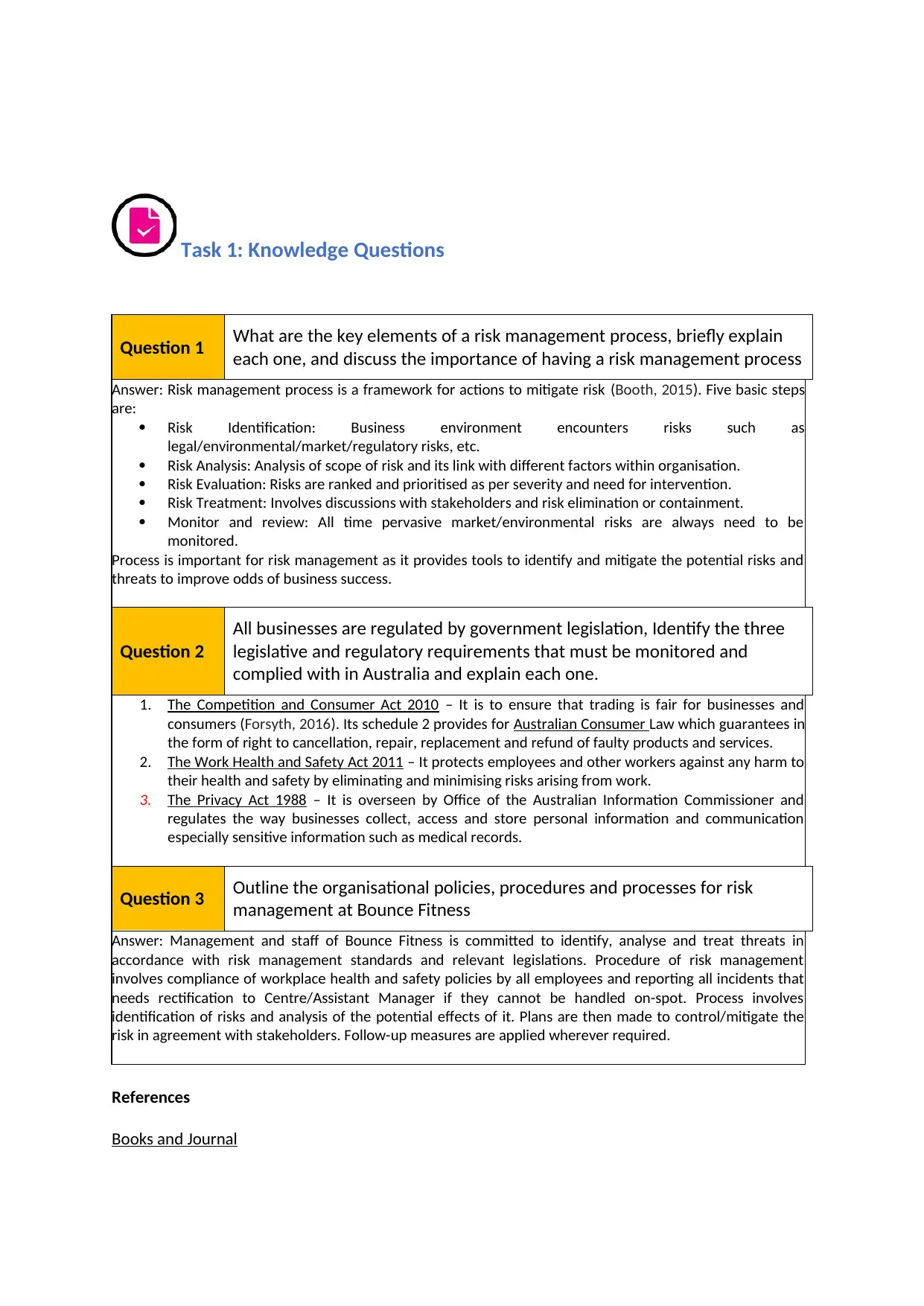
Task 1: Knowledge Questions
Question 1 What are the key elements of a risk management process, briefly explain
each one, and discuss the importance of having a risk management process
Answer: Risk management process is a framework for actions to mitigate risk (Booth, 2015). Five basic steps
are:
Risk Identification: Business environment encounters risks such as
legal/environmental/market/regulatory risks, etc.
Risk Analysis: Analysis of scope of risk and its link with different factors within organisation.
Risk Evaluation: Risks are ranked and prioritised as per severity and need for intervention.
Risk Treatment: Involves discussions with stakeholders and risk elimination or containment.
Monitor and review: All time pervasive market/environmental risks are always need to be
monitored.
Process is important for risk management as it provides tools to identify and mitigate the potential risks and
threats to improve odds of business success.
Question 2
All businesses are regulated by government legislation, Identify the three
legislative and regulatory requirements that must be monitored and
complied with in Australia and explain each one.
1. The Competition and Consumer Act 2010 – It is to ensure that trading is fair for businesses and
consumers (Forsyth, 2016). Its schedule 2 provides for Australian Consumer Law which guarantees in
the form of right to cancellation, repair, replacement and refund of faulty products and services.
2. The Work Health and Safety Act 2011 – It protects employees and other workers against any harm to
their health and safety by eliminating and minimising risks arising from work.
3. The Privacy Act 1988 – It is overseen by Office of the Australian Information Commissioner and
regulates the way businesses collect, access and store personal information and communication
especially sensitive information such as medical records.
Question 3 Outline the organisational policies, procedures and processes for risk
management at Bounce Fitness
Answer: Management and staff of Bounce Fitness is committed to identify, analyse and treat threats in
accordance with risk management standards and relevant legislations. Procedure of risk management
involves compliance of workplace health and safety policies by all employees and reporting all incidents that
needs rectification to Centre/Assistant Manager if they cannot be handled on-spot. Process involves
identification of risks and analysis of the potential effects of it. Plans are then made to control/mitigate the
risk in agreement with stakeholders. Follow-up measures are applied wherever required.
References
Books and Journal
Question 1 What are the key elements of a risk management process, briefly explain
each one, and discuss the importance of having a risk management process
Answer: Risk management process is a framework for actions to mitigate risk (Booth, 2015). Five basic steps
are:
Risk Identification: Business environment encounters risks such as
legal/environmental/market/regulatory risks, etc.
Risk Analysis: Analysis of scope of risk and its link with different factors within organisation.
Risk Evaluation: Risks are ranked and prioritised as per severity and need for intervention.
Risk Treatment: Involves discussions with stakeholders and risk elimination or containment.
Monitor and review: All time pervasive market/environmental risks are always need to be
monitored.
Process is important for risk management as it provides tools to identify and mitigate the potential risks and
threats to improve odds of business success.
Question 2
All businesses are regulated by government legislation, Identify the three
legislative and regulatory requirements that must be monitored and
complied with in Australia and explain each one.
1. The Competition and Consumer Act 2010 – It is to ensure that trading is fair for businesses and
consumers (Forsyth, 2016). Its schedule 2 provides for Australian Consumer Law which guarantees in
the form of right to cancellation, repair, replacement and refund of faulty products and services.
2. The Work Health and Safety Act 2011 – It protects employees and other workers against any harm to
their health and safety by eliminating and minimising risks arising from work.
3. The Privacy Act 1988 – It is overseen by Office of the Australian Information Commissioner and
regulates the way businesses collect, access and store personal information and communication
especially sensitive information such as medical records.
Question 3 Outline the organisational policies, procedures and processes for risk
management at Bounce Fitness
Answer: Management and staff of Bounce Fitness is committed to identify, analyse and treat threats in
accordance with risk management standards and relevant legislations. Procedure of risk management
involves compliance of workplace health and safety policies by all employees and reporting all incidents that
needs rectification to Centre/Assistant Manager if they cannot be handled on-spot. Process involves
identification of risks and analysis of the potential effects of it. Plans are then made to control/mitigate the
risk in agreement with stakeholders. Follow-up measures are applied wherever required.
References
Books and Journal
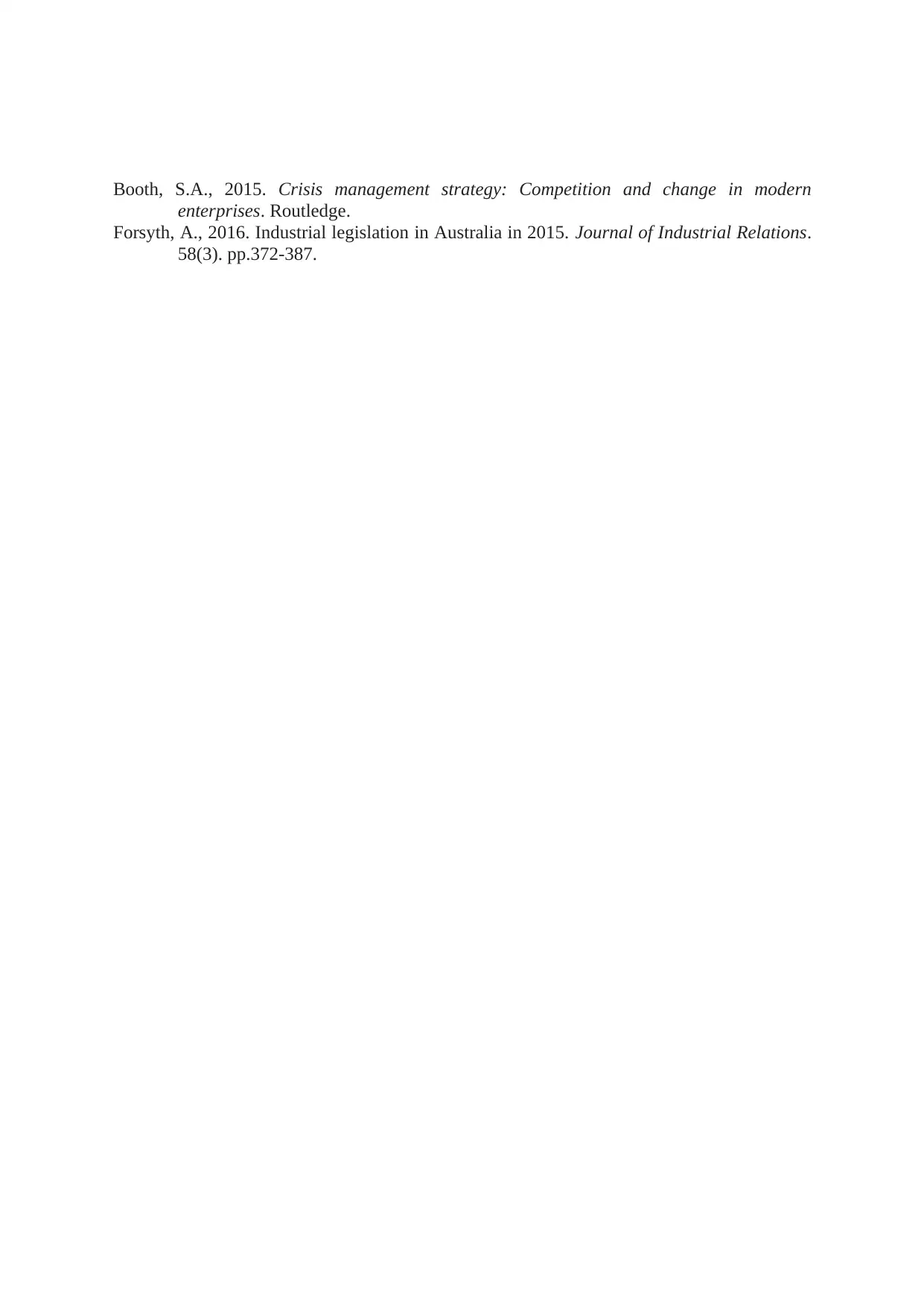
Booth, S.A., 2015. Crisis management strategy: Competition and change in modern
enterprises. Routledge.
Forsyth, A., 2016. Industrial legislation in Australia in 2015. Journal of Industrial Relations.
58(3). pp.372-387.
enterprises. Routledge.
Forsyth, A., 2016. Industrial legislation in Australia in 2015. Journal of Industrial Relations.
58(3). pp.372-387.
⊘ This is a preview!⊘
Do you want full access?
Subscribe today to unlock all pages.

Trusted by 1+ million students worldwide
1 out of 6
Related Documents
Your All-in-One AI-Powered Toolkit for Academic Success.
+13062052269
info@desklib.com
Available 24*7 on WhatsApp / Email
![[object Object]](/_next/static/media/star-bottom.7253800d.svg)
Unlock your academic potential
Copyright © 2020–2025 A2Z Services. All Rights Reserved. Developed and managed by ZUCOL.





